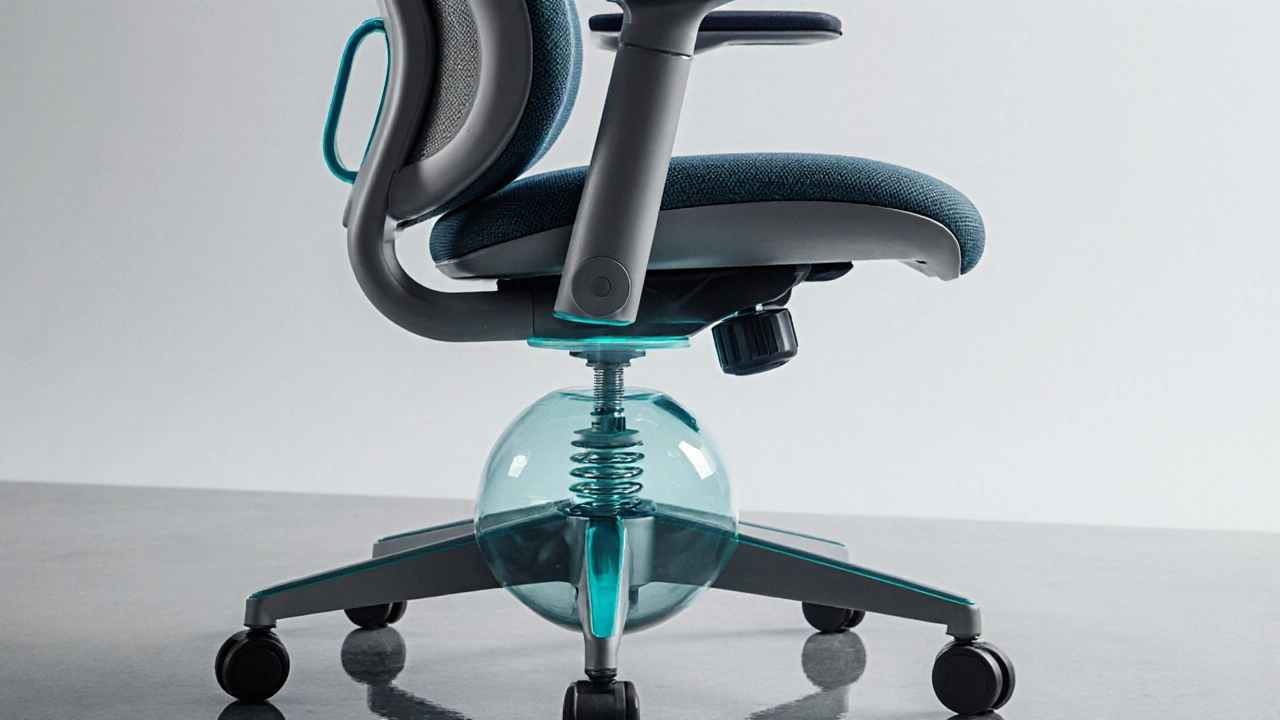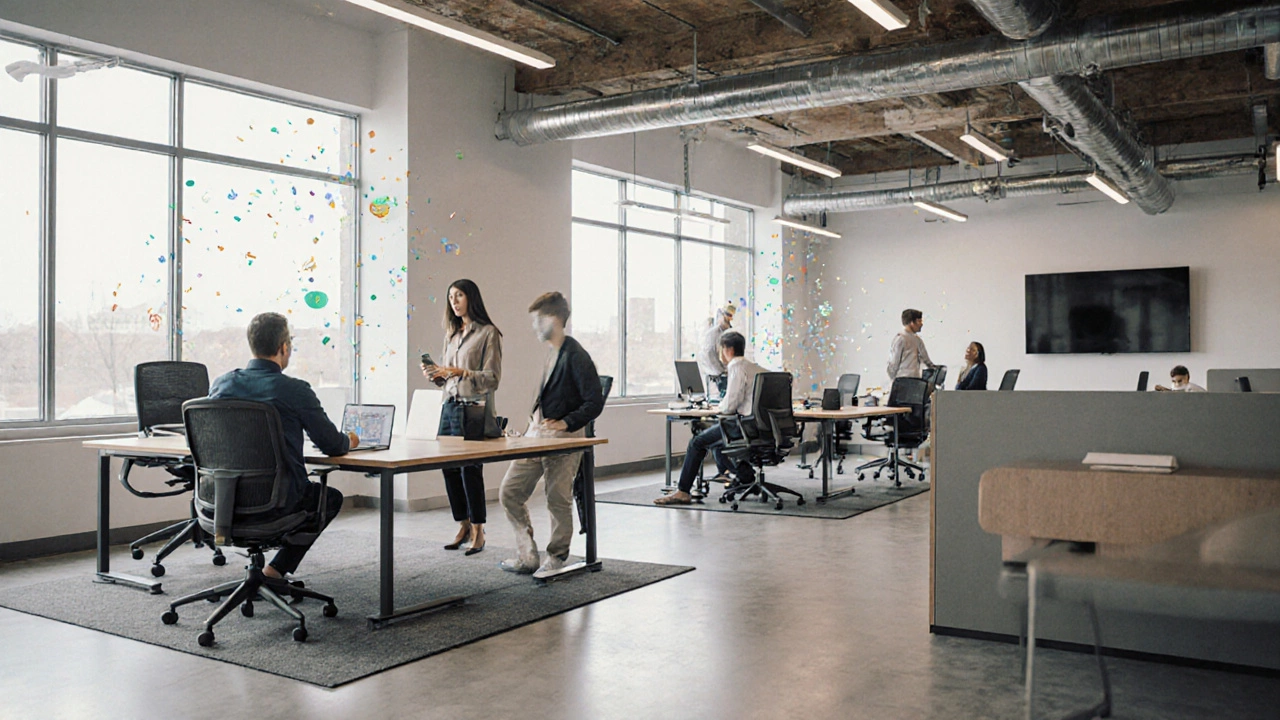ADHD Chair Readiness Checker
Check Your Chair's ADHD-Friendly Features
Answer these 5 questions to see if your chair supports the ADHD walk. This assessment is based on the article's "Quick checklist".
Results
Answer at least 3 questions to see your results
Ever felt your mind drifting while you sit at a desk, then suddenly a tiny urge to wiggle, stretch, or even pace? That restlessness isn’t just a personal quirk - it’s a hallmark of the ADHD walk is a subtle, repetitive movement pattern that people with Attention Deficit Hyperactivity Disorder (ADHD) often use to self‑regulate attention and energy. In the office world, that pattern can clash with a static chair and a traditional desk, leading to distraction, discomfort, or even aches.
Why the ADHD walk matters at work
If you’ve ever watched a colleague shuffle their feet under the table, tap a pen, or pace the aisle during a long meeting, you’ve seen the ADHD walk in action. Research from the University of Cambridge (2023) shows that intermittent movement boosts dopamine release, which in turn sharpens focus for neurodivergent brains. In plain English: a little motion can help you stay on task.
But most office environments are built for stillness. Standard Office chairs are designed primarily for seated comfort and posture support, not for dynamic movement. When you try to incorporate the ADHD walk while glued to a rigid seat, you either end up feeling trapped or you distract your teammates.
Enter active seating: the chair that moves with you
Active seating is a design philosophy that blends ergonomics with mobility. Think of a chair that encourages micro‑movements without compromising lumbar support. The Active chair is a type of office chair equipped with a flexible base, kinetic mechanisms, or a rocker‑style seat that allows controlled swaying. When paired with the ADHD walk, it creates a feedback loop: the chair facilitates movement, the movement sustains attention, and productivity climbs.
Key features to look for:
- Dynamic base (ball, wobble, or spring)
- Adjustable tilt resistance
- Integrated lumbar support that doesn’t lock you in a rigid angle
- Quiet rollers - because you don’t want to startle colleagues
How the ADHD walk compares to other movement strategies
| Strategy | Typical Set‑up | Pros | Cons |
|---|---|---|---|
| ADHD walk (foot pacing) | Standard desk + regular chair | Low cost, no equipment needed | Can be noisy, may distract others |
| Active chair rocking | Active office chair | Quiet, integrated, supports posture | Higher upfront cost |
| Standing desk | Adjustable-height desk | Promotes full‑body movement | May cause fatigue if used all day |
| Fidget tools (stress balls, cubes) | Desk accessories | Portable, discreet | Limited movement, may feel insufficient for ADHD walk |

Setting up an ADHD‑friendly workspace
Creating a zone where the ADHD walk can thrive isn’t rocket science. Follow these simple steps:
- Choose an Active chair that offers a smooth but controllable rock. Test the tilt resistance - you should feel a gentle pushback, not a rigid lock.
- Place a thin rug or anti‑fatigue mat near your desk. It cushions foot pacing and reduces noise.
- Adjust your monitor height so that you can stand upright while rocking, preserving Posture is the alignment of spinal bones and muscles that minimizes strain during work activities.
- Program short movement breaks (e.g., 2 minutes every 25‑minute Pomodoro). Use a timer to remind yourself to stand, stretch, or take a quick walk around the office.
- Communicate with teammates. Let them know that brief foot pacing or chair rocking is part of your focus strategy, and reassure them it’s not a distraction.
Pro tip: Pair the chair with a sit‑stand desk. When the day feels too intense, simply raise the desk and continue the walk while standing. The change of posture can reset attention spikes.
Common pitfalls and how to avoid them
Even the best setup can backfire if you ignore a few warning signs:
- Over‑rocking: If the chair sways too far, you might lose balance. Choose a model with adjustable resistance and set it to a moderate level.
- Noise complaints: Soft‑footed shoes or a low‑profile mat can muffle the sound of foot taps.
- Ignoring ergonomics: A rocking chair that lacks lumbar support can cause lower‑back pain. Always prioritize spinal alignment.
- Sticking to one movement: Variety is key. Alternate foot pacing, torso twists, and chair rocking to prevent muscle fatigue.

Real‑world examples
At a London-based fintech startup, the HR team introduced a “Focus Flex” program. They provided each employee with a budget to pick an active chair. Within three months, self‑reported productivity rose by 12 % among staff who identified as neurodivergent, and the overall office noise level dropped because the chairs absorbed much of the foot‑pacing sound.
Another case: A remote graphic designer in Birmingham swapped a static mesh chair for a wobble‑base model. She noticed that her creative blocks shortened from an average of 45 minutes to just 8 minutes, attributing the change to the subtle movement keeping her dopamine levels steady.
Quick checklist: Is your chair ADHD‑walk ready?
- Does the seat allow a gentle rock or swivel?
- Is the tilt resistance adjustable?
- Does the chair provide lumbar support without locking you upright?
- Are the rollers or casters quiet?
- Can you easily combine it with a standing desk?
If you answered “yes” to most, you’re on the right track. If not, consider upgrading - your focus (and your back) will thank you.
Frequently Asked Questions
What exactly is the ADHD walk?
The ADHD walk is a low‑intensity, repetitive movement-often foot pacing or subtle shifting-that people with ADHD use to self‑regulate attention, mood, and energy levels while working.
Can anyone benefit from an active chair, or is it only for ADHD?
Anyone who feels stiff or distracted during long sitting periods can profit. Active chairs promote micro‑movement, which improves circulation and focus for neurotypical users as well.
Is the rocking motion noisy enough to disturb coworkers?
High‑quality active chairs use silent casters and smooth pivots, keeping sound below typical office background levels. Adding a soft mat can further reduce any foot‑tap noise.
How much should I spend on an active chair?
Prices range from £150 for basic wobble stools to £800 for premium ergonomic models with adjustable tilt and back support. Pick a chair that meets ergonomic standards and fits your budget-investing in comfort pays off in productivity.
Should I combine the ADHD walk with other focus techniques?
Absolutely. Pair the movement with the Pomodoro technique, task batching, or noise‑cancelling headphones. The synergy of micro‑movement and time‑boxing keeps the brain engaged without burning out.
In short, the ADHD walk isn’t a flaw-it’s a natural coping tool. By choosing the right active office chair and tweaking your workspace, you turn restlessness into a productivity engine. Give it a try, and watch your focus level climb without sacrificing comfort.


Write a comment